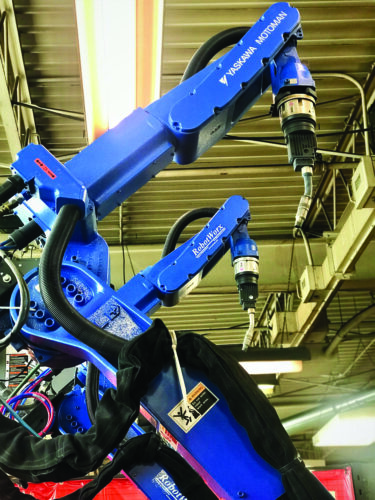Up For the Challenge: The Realities of Running a Family-Owned Business
How two small, family-owned job shops overcome global and personal business trials BY Josh Leath, product manager, welding, Yaskawa America Inc., Waukegan, Ill. Reprinted with permission: The Welding Journal Intrinsic to the American business landscape, small, family-owned fabrication shops are experiencing more challenges than ever. On a grand scale, turbulent global economies and ever-changing regulations are dictating the current state of the manufacturing sector, creating a greater demand for high-quality customized products to be made within the United States. This has forced supply chains to be more agile than ever, prompting manufacturers of all sizes in diverse industries to invest in technologies such as additive manufacturing, analytics, artificial intelligence, and robotics to withstand market pressures and achieve tangible outcomes to stay competitive (Ref. 1). The worldwide skills shortage has also contributed to the daunting task of recruiting skilled, hard-working talent to the mix. At the same time, these outside influences are compounded by more personal struggles. From fiscal stressors to complex family relationships, a delicate balance between personal life and professionalism must be reached. For small, family-owned job shops TnL Welding LLC and Six 5 Design, these challenges and more are met head-on every day, showcasing the hard work and tenacity it takes to keep the doors open and maintain success. Pushing for Something Better For Todd Whitt, the desire to push for something better has always driven his personal and professional success. Whitt is the owner of TnL Welding, a fabricating operation in Sidney, Ohio, specializing in the robotic welding of aluminum and stainless steel parts. In the late 1990s, while working as a line welder, Whitt experienced first-hand how a lack of training can paralyze production when the upper management at the job shop where he was working failed to provide employees with the knowledge needed to properly operate several welding robots that had been installed. At the same time, Whitt happened to be taking a robotics course at a nearby technical college. “It was a wake-up call,” he said, “and once I saw how capable and repeatable robots could be, I realized I could do this.” Combining his talent of welding, vast knowledge of part design, and new ability to operate a robotic welding cell, he eventually took a job as a robot technician for a large aluminum fabricator. While this position provided him with a steady job, the fabricator had trouble keeping up with orders. Overloaded with welding and fabrication work, and having already bought his first used robot for personal use, Whitt made the decision to branch out part-time with his own business. Shortly thereafter, he dedicated himself full time to TnL . With more than 37 years of welding expertise, 27 years of fixture design knowledge, and 18 years of robot programming and preventive maintenance experience, Whitt is still motivated for success at TnL Welding. He runs the shop alongside his daughter and company vice president, Kristen, who is versed with AWS Certified Welding Inspector (CWI) training. The father/daughter duo work together to overcome their biggest challenges, which are listed below. Inconsistent Market Much of the work TnL acquires comes from larger companies needing help with overflow. When these local manufacturers experience downturns, so does TnL. While the company maintains a focus on automotive, agriculture, gas pipe (manual welded), and rack and conveyor systems for warehouses to help deal with unexpected slowdowns, TnL turns away very few jobs. Whitt adds to his company’s production arsenal when he can with equipment such as robots, fixtures, and computer numerical control machines, which provide the consistency needed for efficient high-quality production. The company recently added a second robot to one of its pre-engineered ArcWorld® welding workcells for a total of four robot arms in-house. More robot arms help to improve cycle time for large-quantity production runs on medium- to large-sized parts up to 1600 lb and 9.5 ft long, setting them apart from many smaller job shops — Fig. 1.
TnL Welding LLC uses robotic welding machines to improve cycle time and part quality for large-quantity product runs.
- Deloitte LLP. 2018. Assembling a Strong Future: Industrials Outlook 2018.















